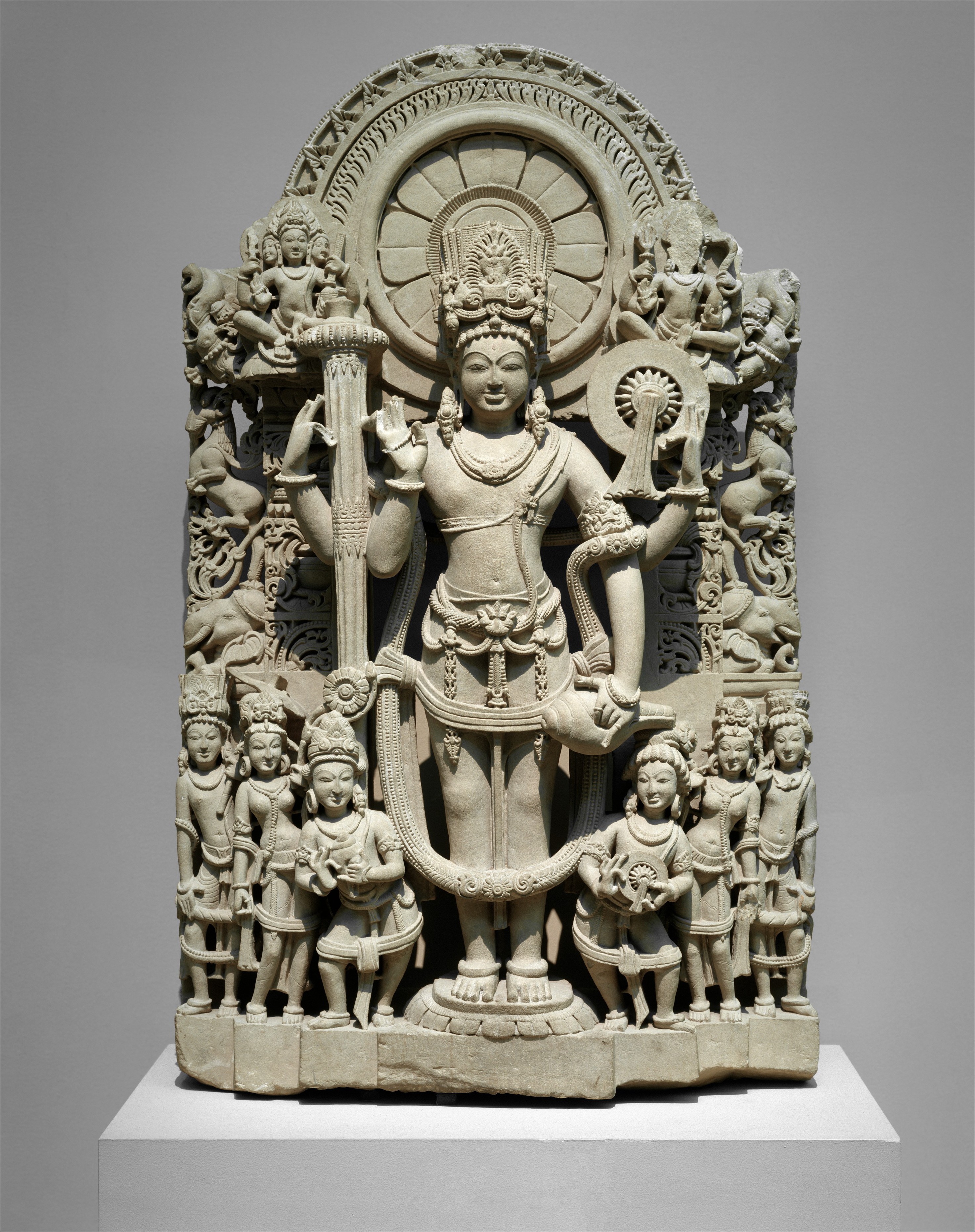The conception of Vishnu as the all-pervading supreme deity took shape by drawing upon three distinct traditions that existed by the middle of the first millennium BCE. These traditions eventually converged, forming the foundation of Vaishnavism. The first two strands were centered around the worship of Vasudeva, who was later identified with Krishna—either as a deified king or heroic figure—and Krishna-Gopala, the divine cowherd. These two elements became the basis for the Bhagavata tradition, which emphasized bhakti (devotion) to a personal deity from its earliest stages. The third strand was the worship of Narayana, often associated with the cosmic man (purusha).

Over time, these traditions, along with others, contributed to the development of a key Vaishnava belief—the concept of avataras (incarnations) or divine descents. The idea that Vishnu incarnates on Earth in various forms to restore cosmic order gained prominence. Among his most revered incarnations are Krishna, Rama, Varaha (the boar), and Narasimha (the man-lion). Even the Buddha was later included in this list of divine descents.
Bhakti and the Influence of Tamil Saints
Vaishnavism, with its foundational emphasis on bhakti, resonated deeply with the devotional outpourings of the Alvars, Tamil poet-saints who flourished between the 6th and 9th centuries CE. The Alvars played a pivotal role in shaping the emotional and devotional aspects of Vaishnavism across India. Interestingly, their Shaiva counterparts, the Nayanars, had a similar transformative influence on Shaivism.
Vishnu, as conceived in the Vedic tradition, retained associations with the sun, symbolizing law, order, and the ideals of kingship. In many ways, Vishnu represents the serene and harmonious force, often likened to the Apollonian archetype, while Shiva embodies a more Dionysian energy marked by intense, ecstatic union.
Cosmic and Emanatory Aspects of Vishnu
Contrary to the expectation that Vaishnavism would focus primarily on human devotion to a personal deity, the tradition also places significant emphasis on cosmic themes. One of the most iconic representations of Vishnu’s cosmic form is found in the Bhagavad Gita, where Arjuna witnesses Krishna’s vishva-rupa (universal form), encompassing all the forms of the universe.

In addition to the concept of avataras, Vaishnavism also explores the idea of vyuhas—emanations of the divine. The Pancharatra tradition, closely associated with the worship of Narayana, offers a detailed schema of these emanations. The Mahabharata’s Narayaniya section outlines this system, where the absolute manifests through a chain of four primary vyuhas: Vasudeva, Sankarshana, Pradyumna, and Aniruddha. These emanations lead to the creation of the manifest universe.
By the 7th century CE, the Pancharatra school, which followed the teachings of the Samhitas (Vaishnava Tantras), became an established form of Tantric Vaishnavism. The school elaborated on the vyuha system, suggesting that the avataras manifest through these emanations rather than directly, as described in the Puranas.
Artistic Representations of Vishnu’s Emanations
From as early as the 2nd century BCE, artists sought ways to visually represent Vishnu’s emanatory aspects. Depictions of deities emerging from the sides of pillars, figures with smaller beings at neck-level, or a frothy nimbus of proliferating entities became common. The iconic image of Vishnu with four heads or various smaller figures emerging from his form symbolizes the idea of divine proliferation and emanation.

Conclusion
The evolution of Vishnu as the supreme deity is a fascinating example of how different religious traditions can merge, creating a rich tapestry of beliefs and practices. Drawing from early bhakti traditions, cosmic visions, and complex theological ideas like avataras and vyuhas, Vaishnavism has developed into a deeply devotional and cosmically aware tradition that continues to inspire millions across the world.
